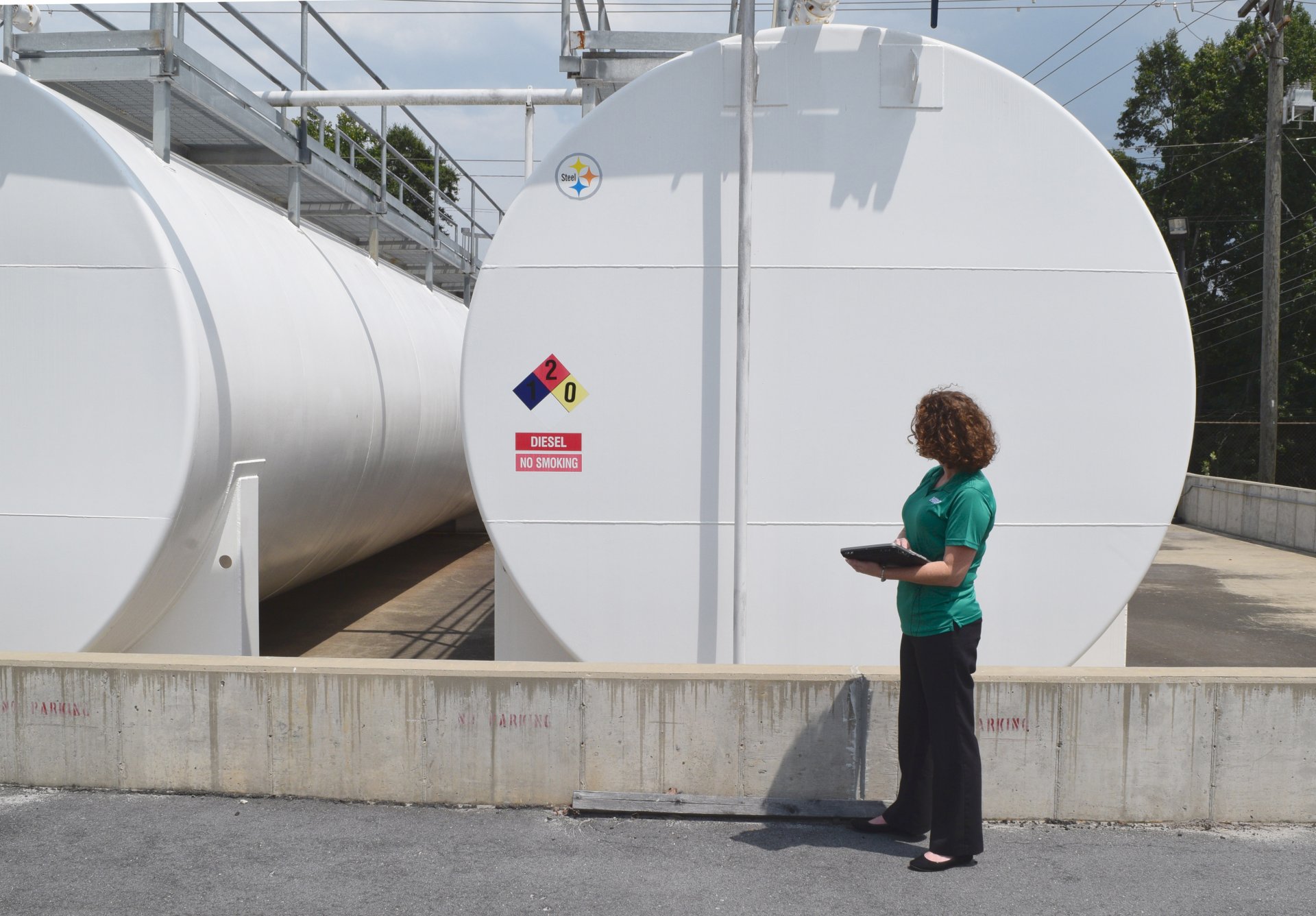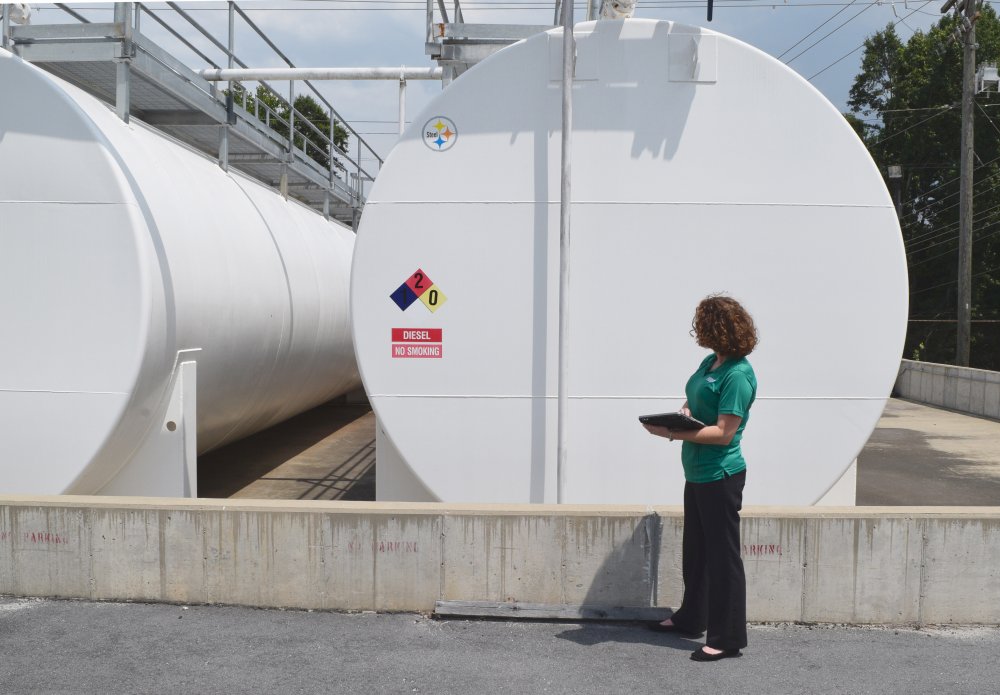A Day in the Life of a Tank Inspector
May 1st, 2023

I’m just a simple person with simple interests. I love long walks on the beach, stargazing, and tanks that are regulated by local, state, and federal agencies.
The first time I saw a tank I was still brand new to the environmental consulting world. It was an annual inspection for a Chemical Bulk Storage (CBS) tank, which is required by New York State for facilities that maintain and operate applicable bulk storage containers that store any hazardous substance listed in 6 NYCRR Part 597.3. I had a long list with me of what needed to be visually inspected and reviewed. Luckily, I was with a very knowledgeable senior colleague who loved to talk and was very invested in making sure I learned as much as I could that day. I continued learning all about tanks by reading state and federal regulations and going on site visits/speaking with various knowledgeable individuals at HRP who have many years of experience and who were happy to answer my many questions.
Flash forward quite a few months later, and now that I have learned the ropes, I get to conduct these site visits on my own. I conduct Annual CBS Visual Inspections, oversight for integrity inspections for both CBS and Spill Prevention Control and Countermeasure (SPCC)/Petroleum Bulk Storage (PBS) regulated tanks, and site visits for SPCC development, all for a wide range of industries (institutional, food production, manufacturing, hospitals, etc.). I have assisted with petroleum bulk storage compliance in various states, including Kentucky, New York, Massachusetts, Minnesota, and Virginia.
Now when I step on-site for an annual CBS inspection, I know what I’m looking for. Typically, I’ll begin with a document review. I’ll check that the CBS registration and Spill Prevention Report (SPR) are up to date and accurate, along with making sure the past annual visual and 5-year integrity inspection reports are being maintained. After the document review, I’ll go to the tanks for the visual inspection. I’ll look for any obvious leakage from the tank system (piping, pumps, tank). I also inspect the transfer station area to be sure it has suitable containment for a spill and has appropriate labeling at the fill port to prevent transferring product to an incompatible tank. It’s common that the fill port station isn’t labeled correctly, every fill port should always have the tanks registered name, the associated hazards, and the tank design and working capacities, and the valves should be clearly labeled with the open and closed positions.
During oversight integrity inspections, I always conduct my own visual inspection of the tanks, whether they be for CBS or SPCC/PBS regulated tanks. This is essentially the same routine as the annual inspections, I’ll review the respective recordkeeping and registration (when applicable) that is required of the facility, look at the tank systems and transfer station. I’ll also be communicating with the certified individual who is conducting the integrity inspection. I want to understand their plan of action (what standard they’re using, initial impressions of the tanks), their findings, and any concerns so I can give the site contact a briefing of what is likely to appear in the report. It is typical that in this briefing I will mention, especially for SPCC/PBS inspections, that there are materials (spill mats, drip pans, etc.) being stored in the fill port station. Combustible materials, such as these items, should not be stored at this location. Or, I’ll mention the apparent paint deterioration on the tank, and that to keep the tank in good operating condition, it should be repaired to prevent further corrosion.
For the SPCC site visits, it is similar to what is done for the CBS inspection. I will inspect all the tank systems to note any obvious non-compliance issued. I will check that if a tank registration certificate is required, that it is accurate and up to date. New York State has the PBS program that all applicable storage tanks must be registered under. I’ll also review the current SPCC plan, make sure it has been reviewed annually and administrative updates have been made, as needed. If a new tank has been recently installed, sometimes the facility will not have it included in the SPCC plan yet (which is usually why I am there). A facility has six months after the installation date of a new tank to incorporate it into their existing SPCC plan. This is a technical amendment; therefore, the plan will need to be recertified by a professional engineer (we provide this service at HRP).
After a long day of inspecting tanks, I go home, review my notes from the day, send a follow up email to the client regarding the inspection, and catch up on one of my shows.
Abigail Searles, Project Consultant at HRP Associates, Inc.








